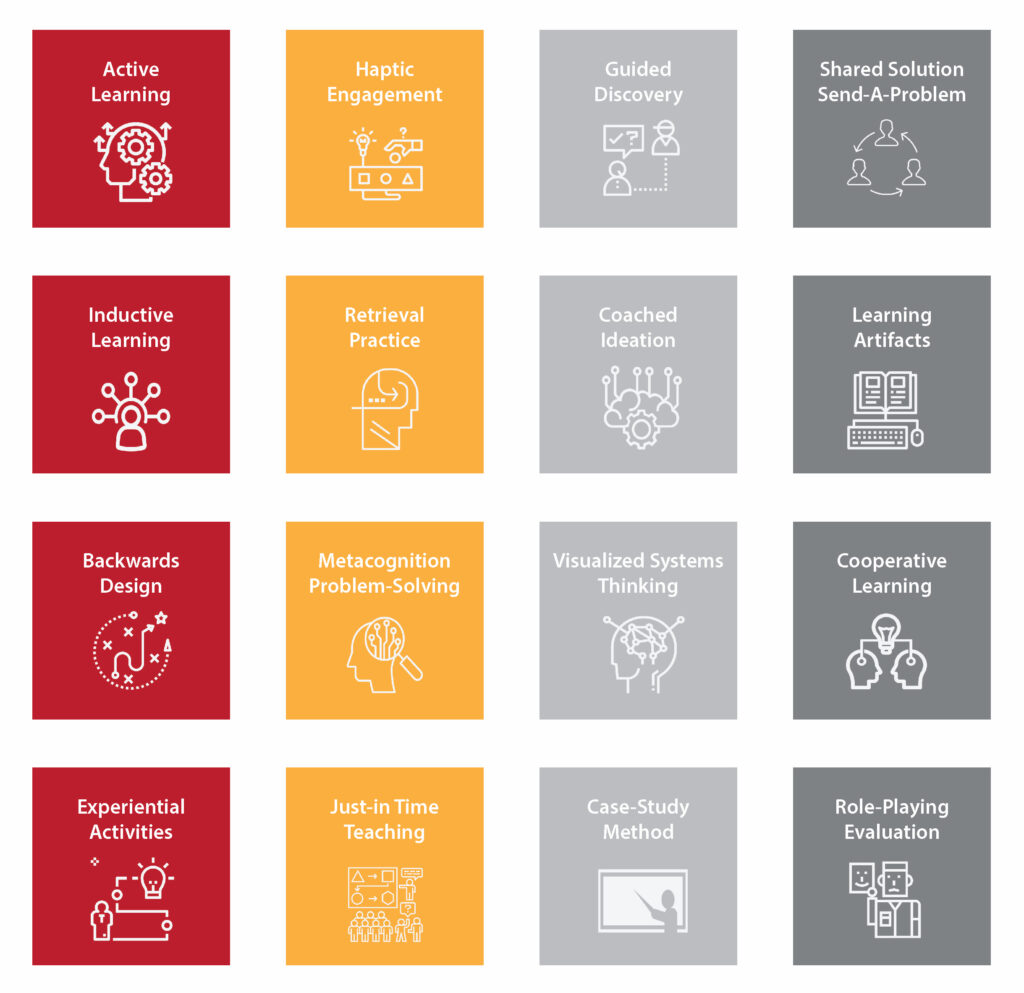Project-Based Learning
Table of Contents
Project-Based learning (PBL) is an ideal teaching format for inquisitive learners and complex problems. Consider the difficulty in trying to address these following questions using traditional course activities:
- Who benefits from renewable energy initiatives?
- How are public health issues related to building design?
- When does water security become problematic—and for whom?
- What are food safety laws worth fighting for today?
In PBL courses, students can embrace the multiplicity of considerations found in these questions. They discover, develop, test, and present their work through various stages of activity—they learn by doing.
What is Project-Based Learning (PBL)?
Project-Based learning (PBL) is a high-impact educational practice ideal for all disciplines that hope to develop deeper engagement in real-world challenges. PBL cultivates a range of skills, stimulates innovative activities, and forges meaningful collaborations and connections across content areas. PBL uses an inductive teaching method in which relevant, authentic, and realistic problems become the framework for course content and activities. This multi-stage process offers students choice and agency to explore multiple learning pathways and potential solutions. With the instructor’s navigational assistance, students learn by exploring, finding unique ways to answer questions, and solving problems through self-directed activities and public presentations.
In PBL courses, students complete various performance tasks that demonstrate that knowledge, understanding, and proficiency through tangible products or performances. Formative learning experiences, focused on the application of knowledge, occur throughout—problem-solving is the key to this type of knowledge acquisition. The format develops the students’ ability to think critically, creatively, and productively about a problem, while also nurturing team skills. These meaningful experiences help students connect more deeply with the material while improving their enthusiasm and engagement with the work.
What is the difference between a “Project” and Project-Based Learning?
Many courses routinely include “projects” as part of their course assignments. Projects are typically teacher-directed, highly-structured, summative, exercises with clear answers: “Size this beam” or “Develop a market report.” Whereas a Project-Based learning approach uses more of an open-ended, inquiry-based approach to problem-solving: “What are the most effective attributes of a sustainable building?” “How can literature be a vehicle for social change?” When problem-solving is the primary goal of the course, this method is also called Problem-based learning.
PBL routinely uses creative thinking, problem-solving, production, and performance are the natural focus of instruction, but it’s useful for nearly every discipline. PBL makes connections between disciplinary boundaries more apparent. For example, a PBL course that studies water quality will need to consider how to synthesize considerations from several sciences, business, public health issues, etc. to best understand the problem.
Common characteristics of PBL
PBL is flexible and adaptable because of the learning scaffolding around a central research question. There are several characteristics project-based learning courses must have:
- Driving Question: The work centers around a fundamental inquiry that instills a “Need to Know.” This problem must be challenging, meaningful, and not quickly answered.
- Authenticity and Significance: Projects based on authentic and real-world challenges have significance to the students, teachers, and community.
- Voice and Choice: Projects are student-centered, with instructors serving as facilitators that offer formative guidance. Engagement and enthusiasm develop with student investment in the project outcome.
- Sustained Inquiry: Students learn various ways to investigate and improve the work. The integration of multiple scales of inquiry occurs as skills and knowledge build upon each other in the investigation, production, and reflection/feedback.
- Ideation and Innovation: Students cultivate learning through the creation of artifacts, reports, visualizations that address the inquiry; doing so creates ownership of knowledge.
- Evaluation and Reiteration: Students demonstrate knowledge through genuine applications that align with course objectives; reflection, assessment, and assessment of efficacy are central objectives.
- Production & Presentations: Students produce summative work shared with others; this process cements the learning as students determine how to communicate the value of their efforts and inquiries.
- Cooperative Learning: Students learn to collaborate and communicate in a practice-based model of cooperation.
Research has shown the effectiveness of this approach on student engagement, skill-development, communication, and content retention, mainly when the Kolb Model of experiential learning is employed.
One of the benefits of the PBL model is the ease in which various teaching techniques integrated into the course activities: case studies, role-playing, just-in-time teaching, visualization techniques for systems thinking, and coached problem-solving, and guided discovery problems. Team-Based Learning and other collaborative learning techniques that integrated into PBL activities; these group activities create opportunities for additional improvements in retention and soft-skill building. The process inherently combines the four Cs of 21st Century learning: Critical Thinking, Communication, Collaboration, and Creativity.
Project-Based Learning at Iowa State University
There as several factors particular to Iowa State University that drive our use of project-based learning: Our Land-Grant mission compels innovative and practical course work with an emphasis on applied-learning—particularly for a new generation of learners. As our courses and on-going research work continue to confront the vexing global challenges through multi-disciplinary efforts, we’ll need an educational approach that values and promotes collaborative working skills and meaningful experiences. And finally, the creative problem-solving and collaborative educational efforts found in a PBL approach can nurture the vibrant ecosystem of innovation and entrepreneurship that defines Iowa State University.
Iowa State University’s Strategic Plan (2017-2022) recommends that all students participate in at least two high-impact practices in their education, ideally one in their first year and another within the context of their major. Project-based learning offers an opportunity to expand student access to high-impact practices without significant changes in the curriculum. Regularly throughout the year, thousands of students participate in project-based activities from entry-level through their capstone projects. Examples of this work are pervasive in certain student club activities and our thriving community-engagement / service-learning efforts.
